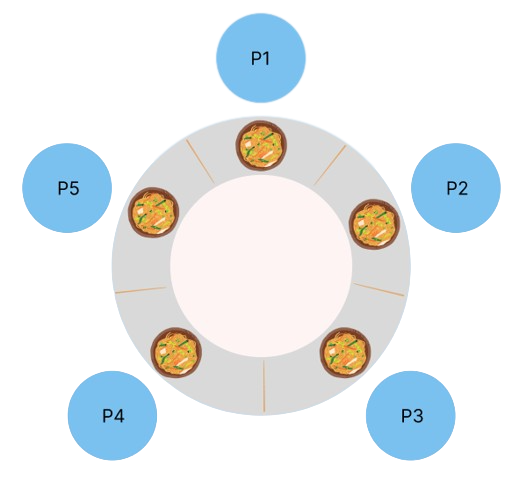Dining Philosophers Problem
The Dining Philosopher Problem is a classic computer science problem that illustrates the challenges of
synchronization and resource allocation in a concurrent system. The problem involves a set of philosophers
sitting around a table, each with a plate of spaghetti and a fork on either side of them. The philosophers spend
their time either eating or thinking. To eat, a philosopher must have both forks, one on each side of their
plate.
The challenge is to create a solution that ensures that no two philosophers will attempt to eat with the same
fork at the same time, which can lead to a deadlock where no philosopher can proceed with their meal.
There are various solutions proposed for this problem, with the most common one being the use of a technique
called "resource allocation". This technique involves introducing a central authority that controls access to
the forks. The authority can be implemented using a mutex, semaphore or other synchronization primitives, and is
responsible for ensuring that a philosopher can only acquire both forks if they are available.
Overall, there are many solutions to the Dining Philosopher Problem, each with their own advantages and
drawbacks. The optimal solution depends on the specific constraints and requirements of the system in question.

